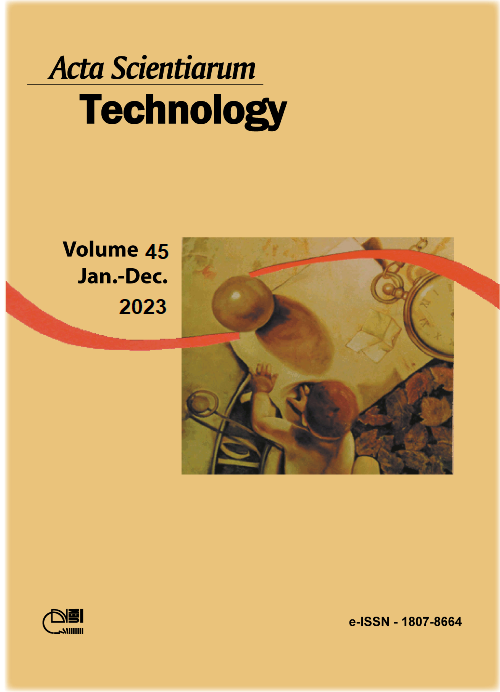Physicochemical characteristics and bioactive compounds of three puçá (Mouriri pusa Gardner) varieties, an underexploited fruit from the Brazilian Cerrado
DOI:
https://doi.org/10.4025/actascitechnol.v45i1.61765Keywords:
ascorbic acid; Brazilian fruit; carotenoids; HPLC - DAD; phenolic compounds.Abstract
Puçá fruits are native to the Cerrado biome yet little explored, presenting different varieties with distinct fruit peel colors. Although puçá fruits have been known to exhibit a good source of bioactive compounds, the phenolic profile of some varieties remains unknown. Based on this context, our research aimed to evaluate the chemical composition and bioactive compounds and characterize for the first time the phenolic profile in yellow puçá, brown puçá, and black puçá by high-performance liquid chromatography coupled with diode array detection (HPLC - DAD). The three puçá varieties contained considerable quantities of important food constituents, such as high concentrations of vitamin C, carotenoids and phenolic compounds. These fruits are mostly composed of phenolic acids, with p-coumaric acid being the major compound in all varieties, while ellagic acid was detected only in the brown puçá. Moreover, (−)-epicatechin was found only in the yellow puçá. This study is the first to report the identification of the phenolic profile in puçá. Moreover, our data indicate that the three fruit varieties present a promising chemical composition, suggesting that they may serve as potential sources of natural antioxidants. In addition, these findings can contribute to the establishment of puçá as a novel ingredient for formulations with functional claims.
Downloads
References
Downloads
Published
How to Cite
Issue
Section
License
DECLARATION OF ORIGINALITY AND COPYRIGHTS
I Declare that current article is original and has not been submitted for publication, in part or in whole, to any other national or international journal.
The copyrights belong exclusively to the authors. Published content is licensed under Creative Commons Attribution 4.0 (CC BY 4.0) guidelines, which allows sharing (copy and distribution of the material in any medium or format) and adaptation (remix, transform, and build upon the material) for any purpose, even commercially, under the terms of attribution.
Read this link for further information on how to use CC BY 4.0 properly.











8.png)




